
Portfolio: Defining traffic patterns
Defining traffic patterns by turning lawn into meadow
Perched on a steep hillside overlooking the forest, this yard had several existing plantings but the heavy lawn footprint meant each different section merged with the next. We used new meadow plantings to accentuate the different parts of the space and better define the natural traffic patterns. In addition to bringing more wildlife into the front yard the plantings help to better ground the front of the house in its lovely clearing in the woods.
To illustrate how plantings change over time images are presented by growing season in reverse-chronological order.
Second growing season:
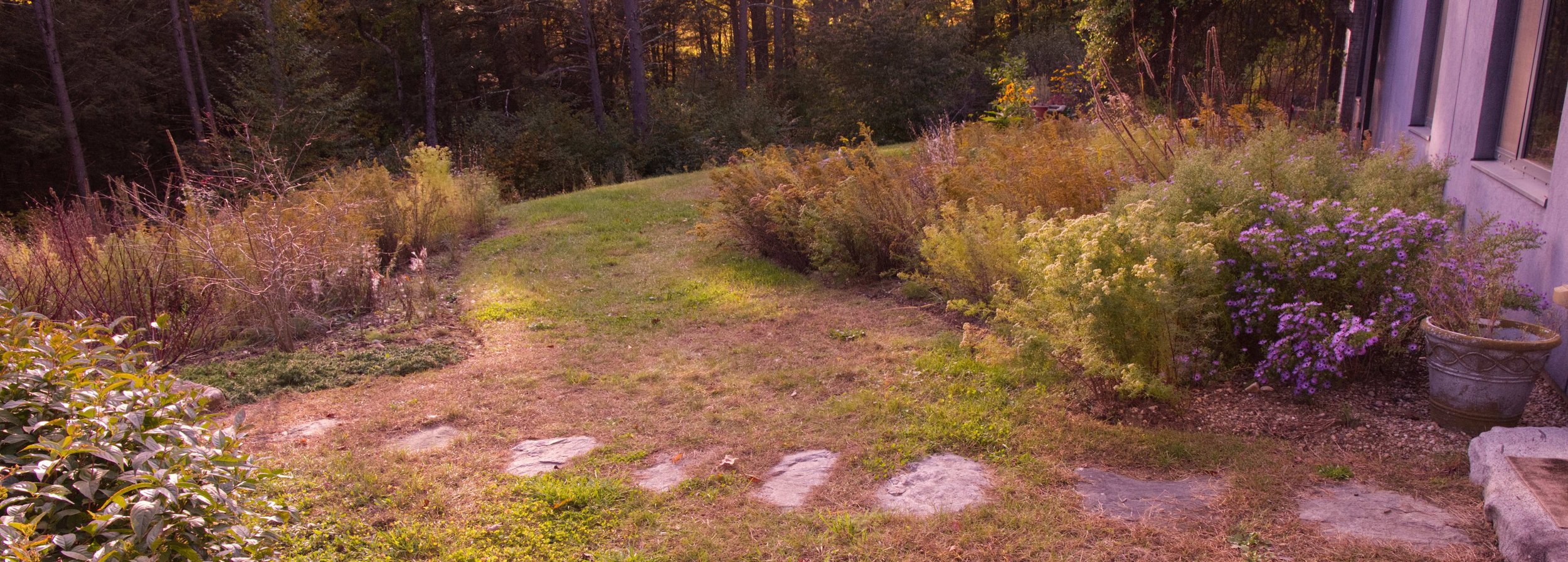
Early October with Aromatic aster just coming into bloom.

Mid-August. The presence of this central meadow planting nudges the viewer into a small choice—down the steps or deeper into the side yard?
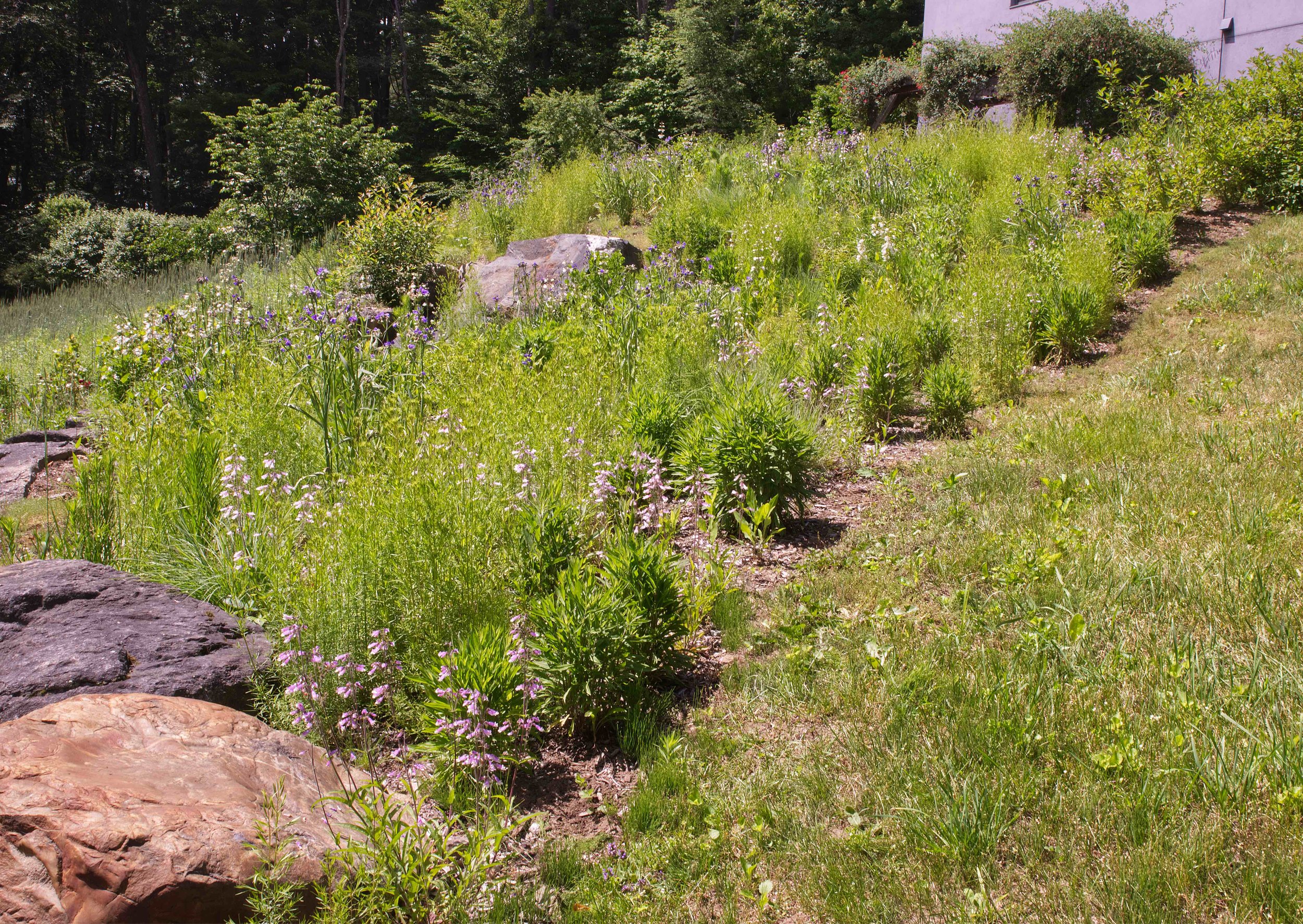
These plants still have a bit of filling out to do before reaching full maturity but have substantially more volume than in the first year. From some vantage points this is starting to look like a mature meadow.
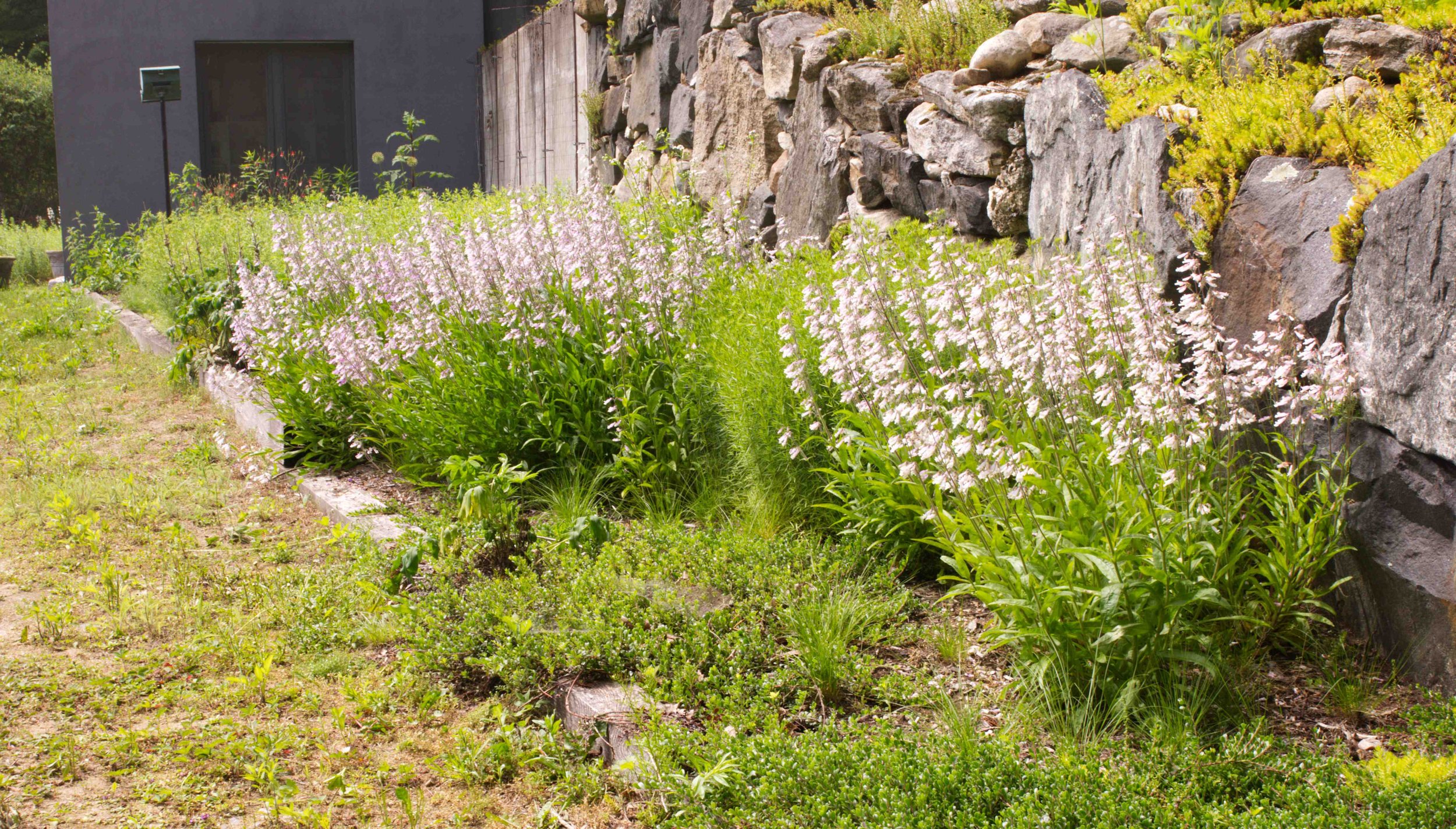
Hairy beardtongue is a wonderful—and underplanted—native that is valued by pollinators and that reliably flowers in it's second year.

Developing planting with flowers that bloom through the growing season not only ensures visual interest, but an ecosystem that is more supportive of insect life.
End of first growing season:
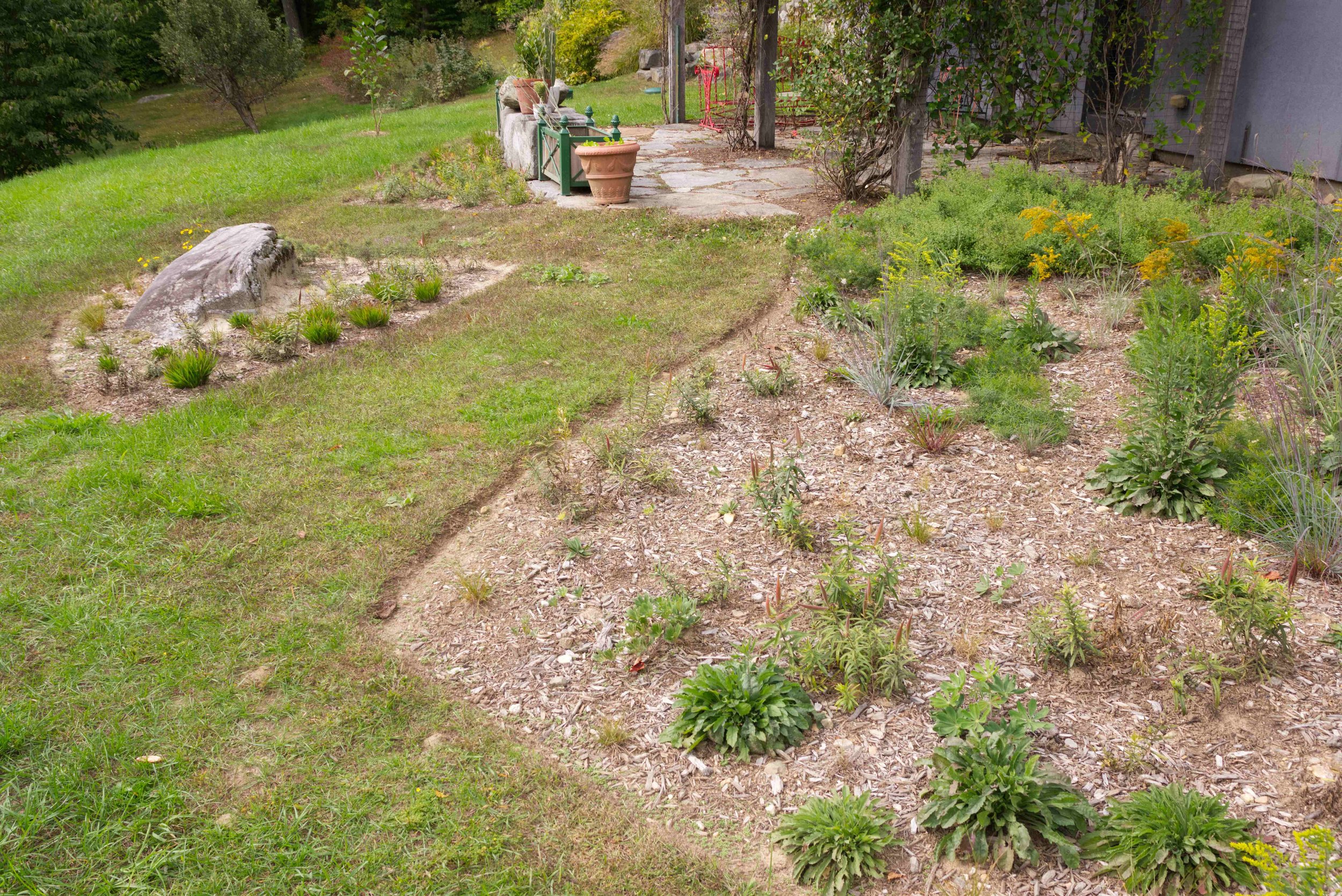
The variable above-ground growth rate of different plant species is represented by the very visible gaps here, which will fill in once everything has matured.
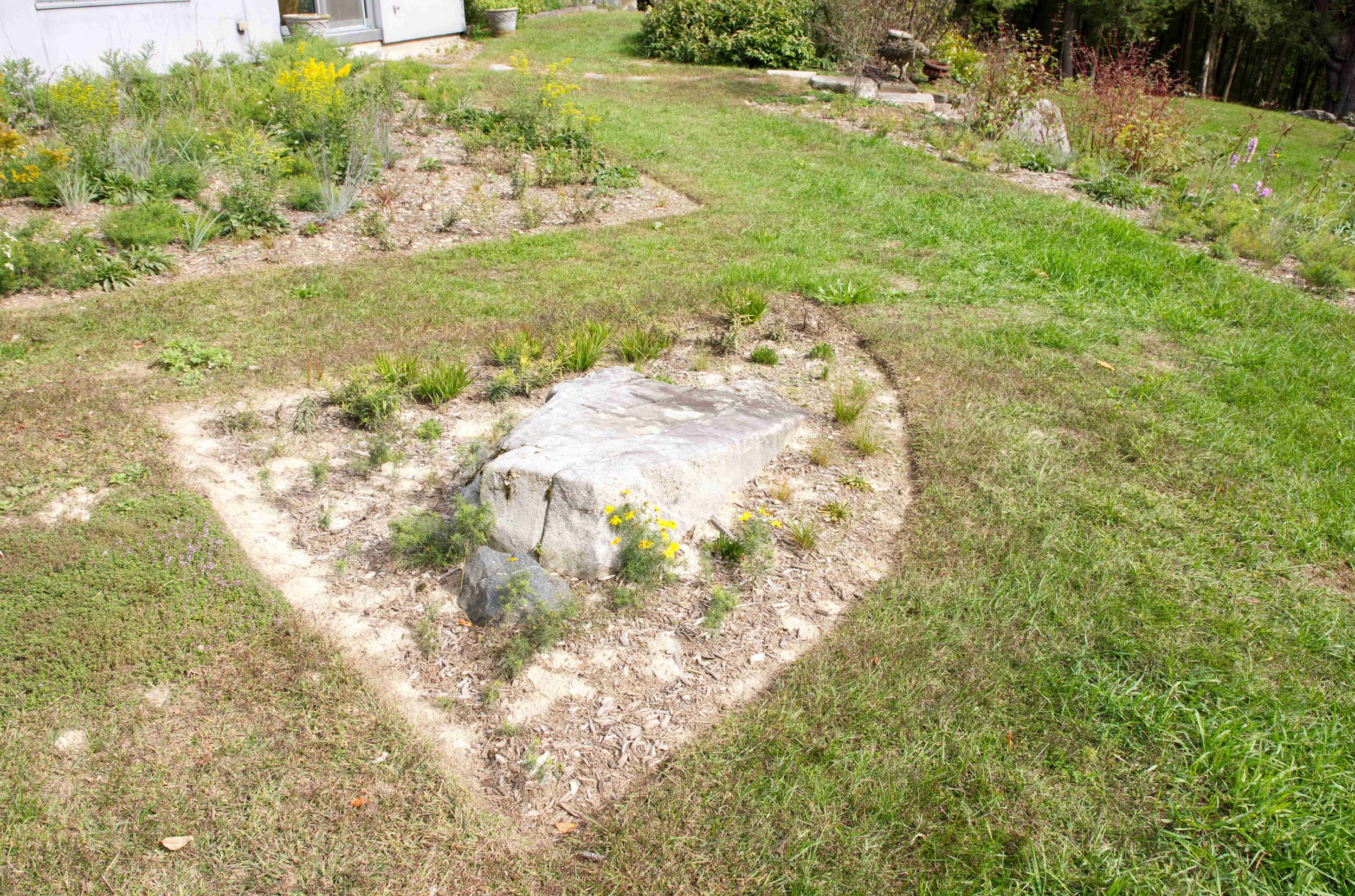
Existing landscape features like this wonderful rock are opportunities to create landscapes that are unique and site-specific.
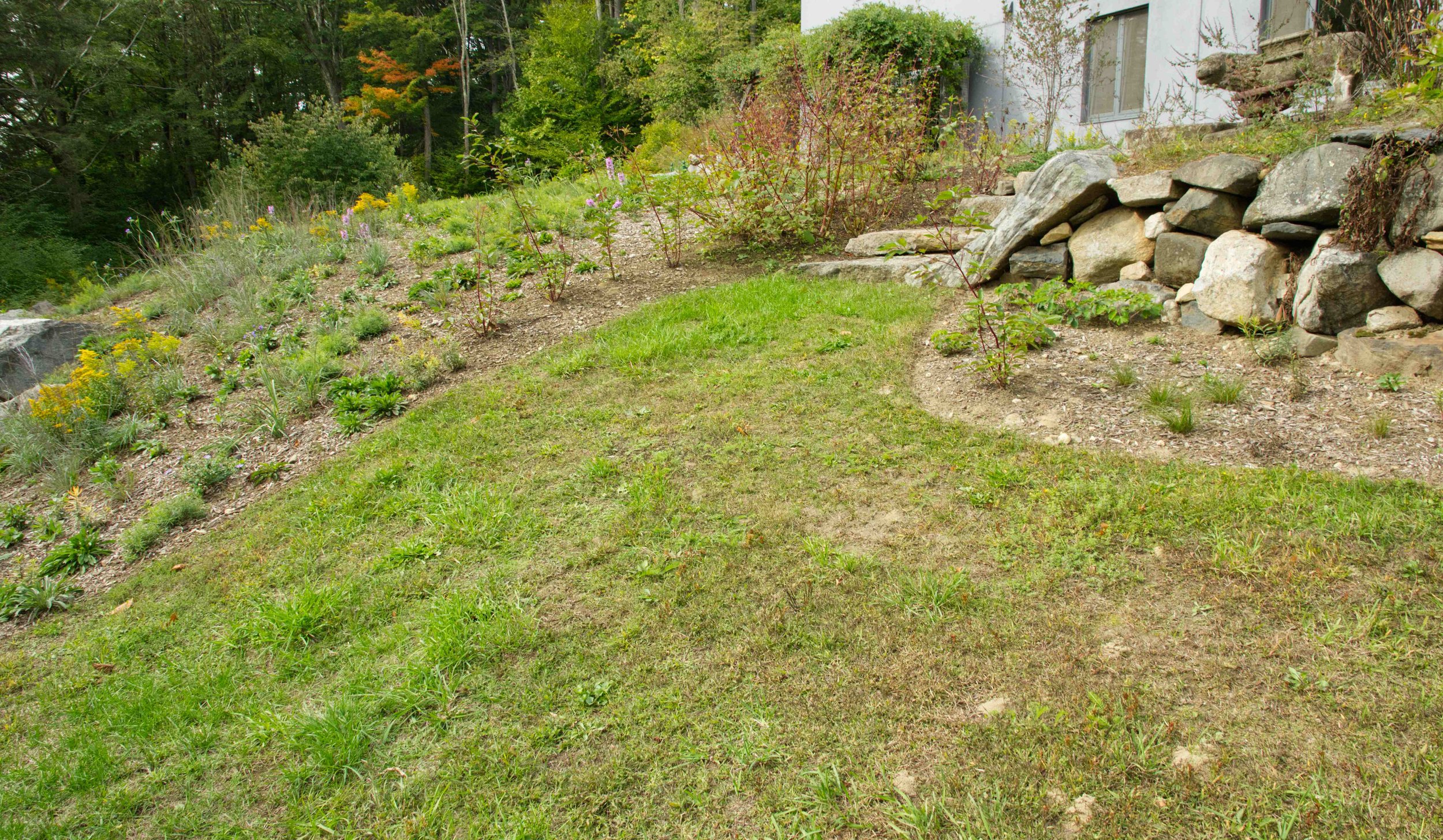
Even a small planting, like this bed on the right, can help to define a transition point such as these rock stairs.
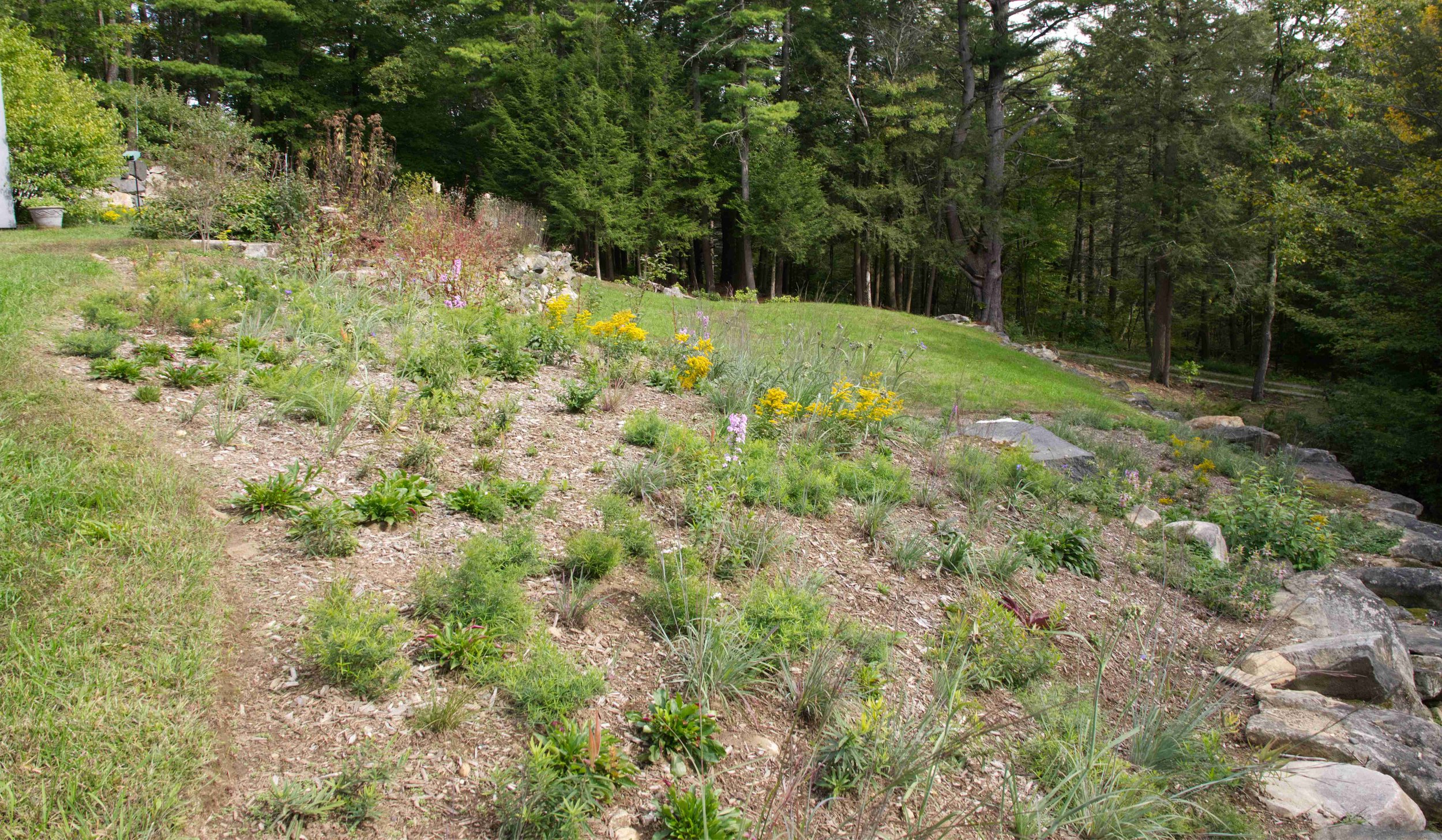
These plants have put on significant growth in their first year, but seeing bare ground is a sure sign that there is substantial growing in to do.
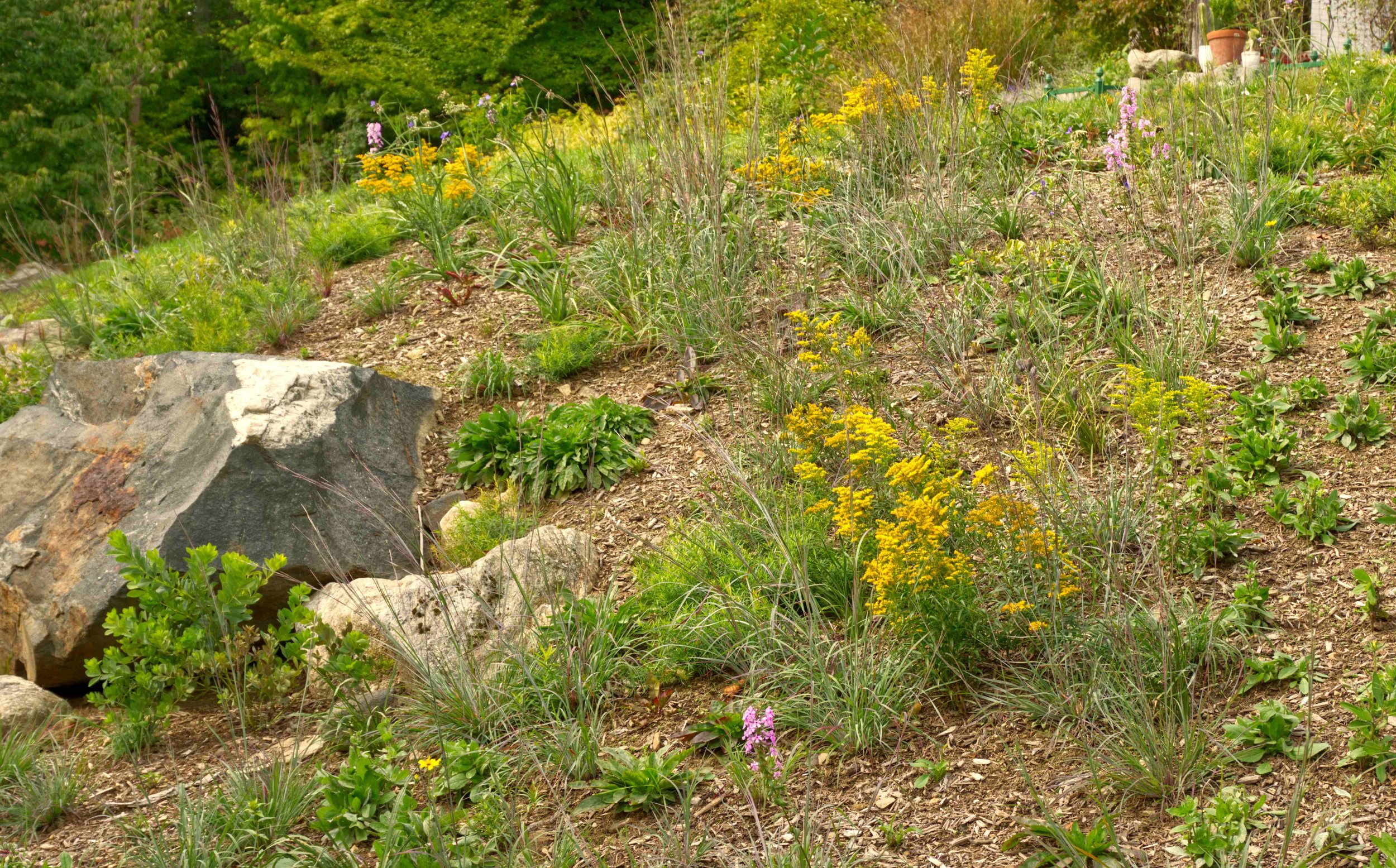
If plugs are planted in the spring, a surprisingly number of species will flower in their first growing season.
Post-installation:

Planting with small plugs enables the creation of more expansive gardens, but proper weeding during the first and second growing season is critical for successful establishment of the plant community.
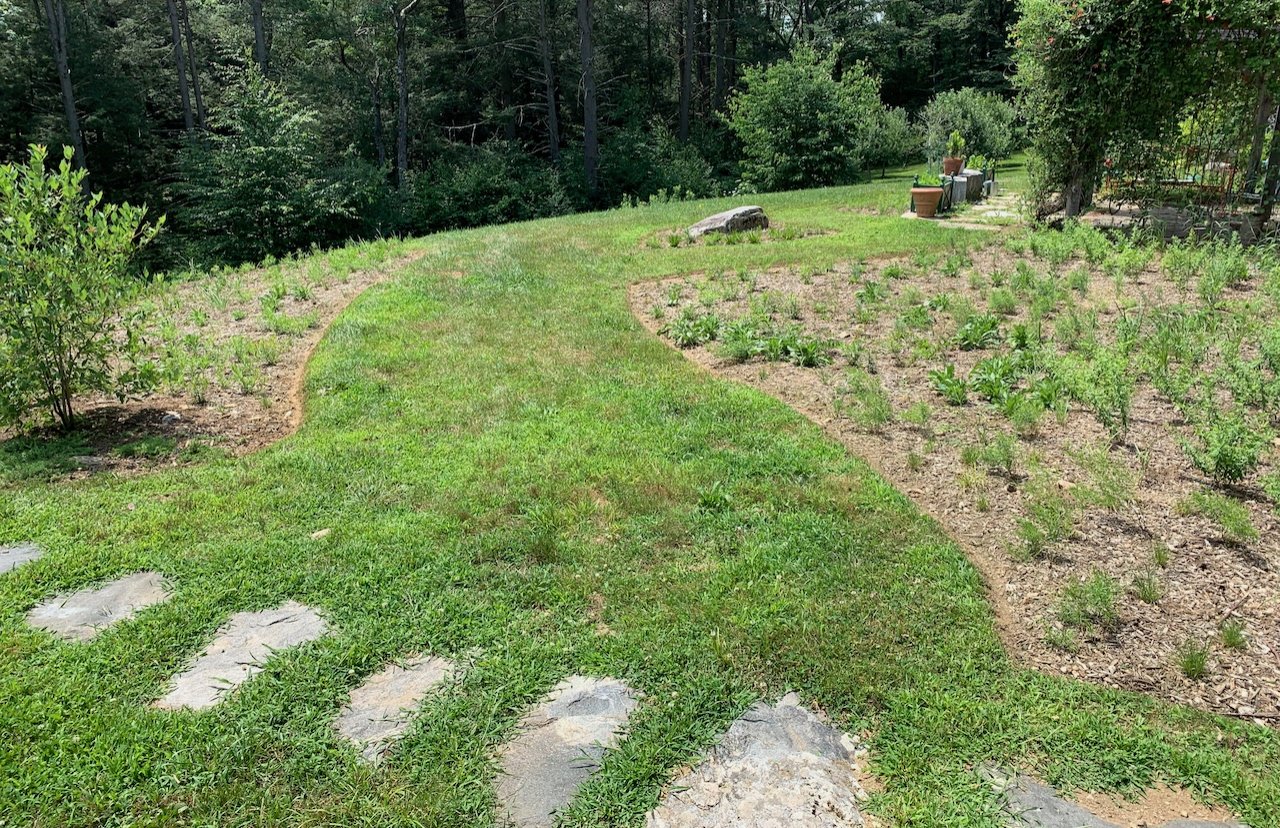
Reducing the amount of lawn increases its impact. Limiting the space available for foot traffic beckons the viewer into the landscape.
Pre-installation site conditions:
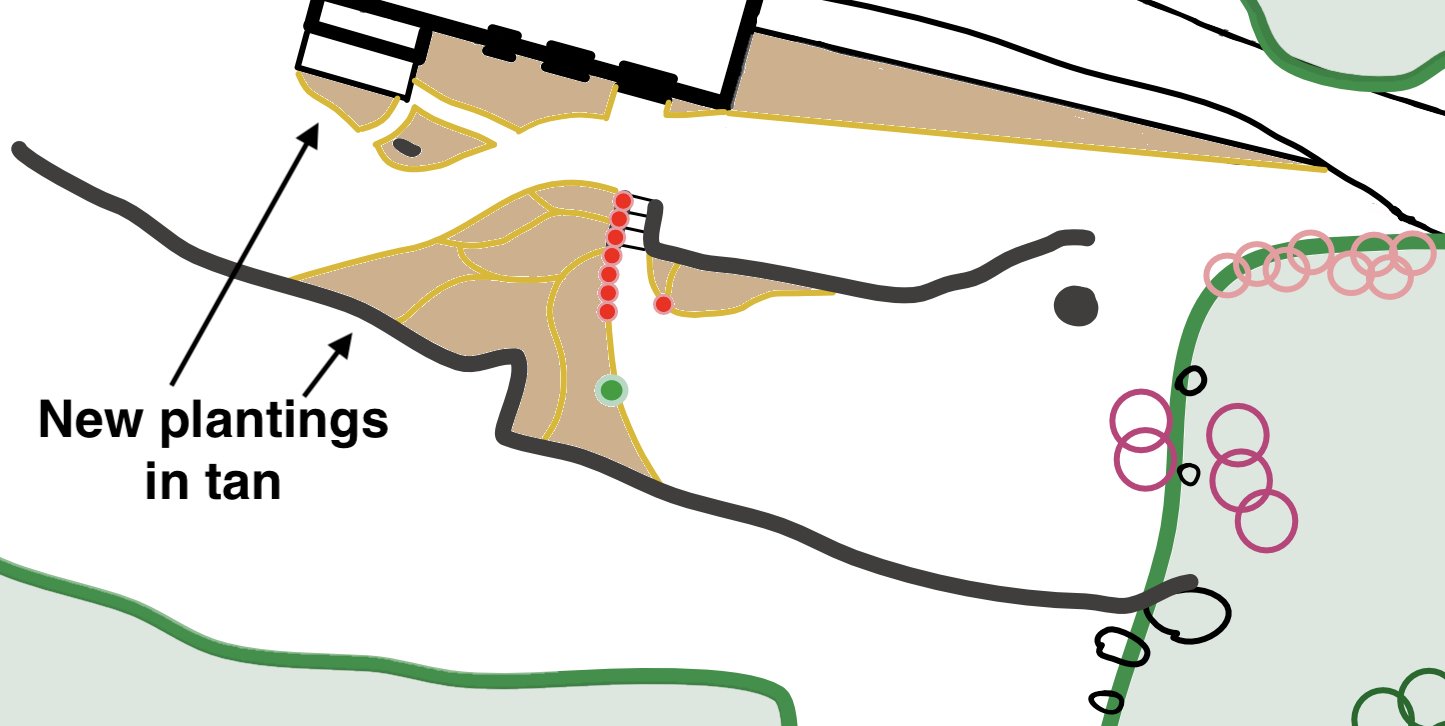
Graphic showing new planting areas and zones.
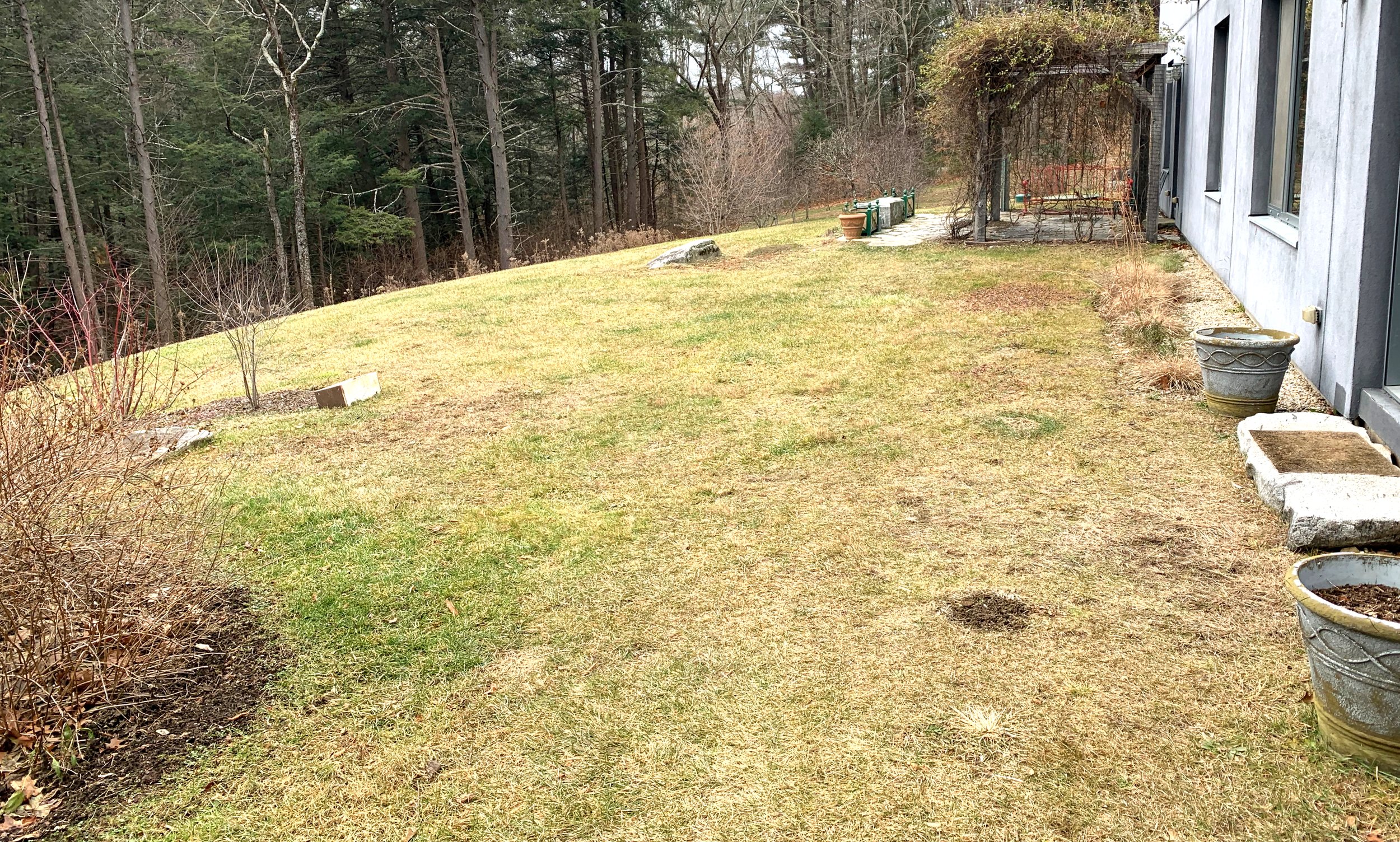
Upper lawn and existing plantings before installation. This area is a natural passageway but with this much lawn it lacks definition.

While the pergola creates an outdoor room for the patio area, the other entryway floats in the middle of the lawn and the different sections of yard lack definition.
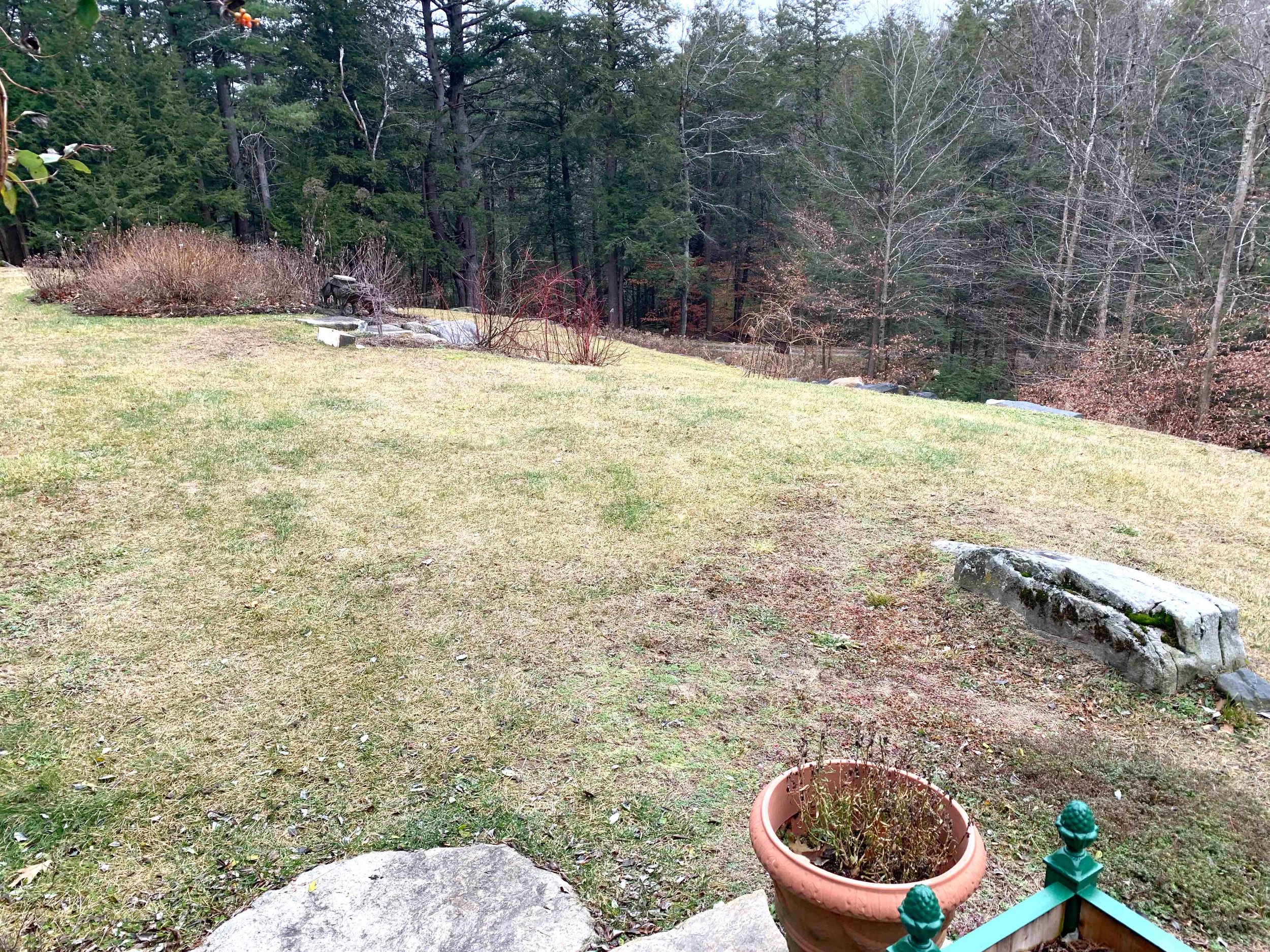
Looking down over the sloped yard. This wonderful view into the trees was lacking depth with an expanse of lawn taking up the nearer field of view.
